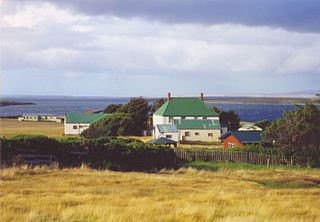 W
WTussock grasses or bunch grasses are a group of grass species in the family Poaceae. They usually grow as singular plants in clumps, tufts, hummocks, or bunches, rather than forming a sod or lawn, in meadows, grasslands, and prairies. As perennial plants, most species live more than one season. Tussock grasses are often found as forage in pastures and ornamental grasses in gardens.
 W
WAlopecurus arundinaceus, the creeping meadow foxtail or creeping foxtail, is a rhizomatous perennial species in the Grass family (Poaceae). Native to Eurasia and northern Africa, and widely introduced elsewhere, this sod forming grass is useful as a forage and for erosion control. It grows in damp or saline grasslands and banks of waterways, and on mountains up to 1,200 m. It flowers between April and July, depending on its location.
 W
WAndropogon gayanus is a species of grass native to most of the tropical and sub-tropical savannas of Africa.
 W
WAnthephora pubescens, with the common names bottle brush grass and wool grass, is a draught tolerant bunchgrass native to tropical and southern Africa.
 W
WBrachypodium sylvaticum, commonly known as false-brome, slender false brome or wood false brome, is a perennial grass native to Europe, Asia and Africa. It has a broad native range stretching from North Africa to Eurasia.
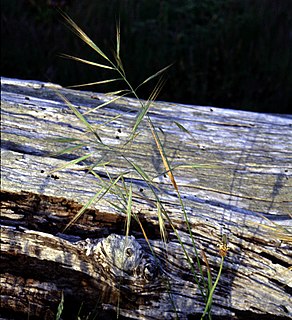 W
WBromus diandrus is a species of grass known by the common names great brome and "ripgut brome".
 W
WBromus ramosus, the hairy brome, is a bunchgrass in the grass family Poaceae, native to Europe, northwest Africa and southwest Asia. The name Bromus comes from the term brome, meaning oats. Unlike most other bromes, it grows in shady sites under trees.
 W
WBromus tectorum, known as downy brome, drooping brome or cheatgrass, is a winter annual grass native to Europe, southwestern Asia, and northern Africa, but has become invasive in many other areas. It now is present in most of Europe, southern Russia, Japan, South Africa, Australia, New Zealand, Iceland, Greenland, North America and Asia. In the eastern US B. tectorum is common along roadsides and as a crop weed, but usually does not dominate an ecosystem. It has become a dominant species in the Intermountain West and parts of Canada, and displays especially invasive behavior in the sagebrush steppe ecosystems where it has been listed as noxious weed. B. tectorum often enters the site in an area that has been disturbed, and then quickly expands into the surrounding area through its rapid growth and prolific seed production.
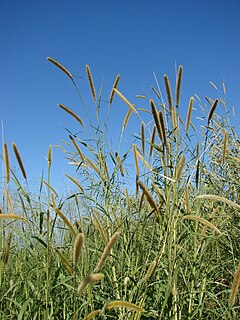 W
WCenchrus purpureus, synonym Pennisetum purpureum, also known as Napier grass, elephant grass or Uganda grass, is a species of perennial tropical grass native to the African grasslands. It has low water and nutrient requirements, and therefore can make use of otherwise uncultivated lands. Historically, this wild species has been used primarily for grazing, recently, however, it has been used as part of a push–pull agricultural pest management strategy. Napier grasses improve soil fertility, and protect arid land from soil erosion. It is also utilized for firebreaks, windbreaks, in paper pulp production and most recently to produce bio-oil, biogas and charcoal.
 W
WCenchrus setaceus, commonly known as crimson fountaingrass, is a C4 perennial bunch grass that is native to open, scrubby habitats in East Africa, tropical Africa, the Middle East and south-western Asia. It has been introduced to many parts of the world as an ornamental plant, and has become an invasive species in some of them. It is drought-tolerant, grows fast, reaches 3 feet in height, and has many purple, plumose flower spikes.
 W
WDactylis is a genus of Eurasian and North African plants in the bluegrass subfamily within the grass family. They are known in English as cock's-foot or cocksfoot grasses, also sometimes as orchard grasses.
 W
WDactylis glomerata, also known as cock's-foot, orchard grass, or cat grass (due to its popularity for use with domestic cats) is a common species of grass in the genus Dactylis. It is a cool-season perennial C3 bunchgrass native throughout most of Europe, temperate Asia, and northern Africa.
 W
WDanthonia decumbens is a species of grass commonly known as the heath grass, heath-grass, or staggers grass It is a tussock grass native to Europe and adjacent parts of Asia and North Africa. It may also be native to Newfoundland and Nova Scotia.
 W
WDeschampsia flexuosa, commonly known as wavy hair-grass, is a species of bunchgrass in the grass family widely distributed in Eurasia, Africa, South America, and North America.
 W
WEragrostis amabilis is a bunchgrass, in the subfamily Chloridoideae of Poaceae, native to Africa and southern Asia. Synonymy includes: Eragrostis tenella Benth., Eragrostis elegans Nees, and Eragrostis interrupta Lam. Döll.
 W
WEragrostis cilianensis is a species of grass known by several common names, including stinkgrass, candy grass, and gray lovegrass.
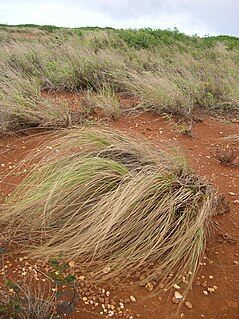 W
WEragrostis curvula is a species of grass known by the common name weeping lovegrass. Other common names include Boer lovegrass, curved lovegrass, Catalina lovegrass, and African lovegrass.
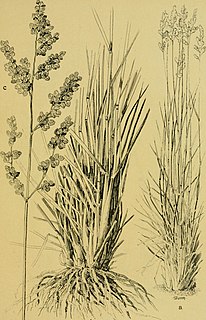 W
WEragrostis echinochloidea, is a species of grass native to South Africa. Listed as "safe" (LC) on the SANBI Red List, the plant can also be found in Zimbabwe, Botswana, and Namibia.
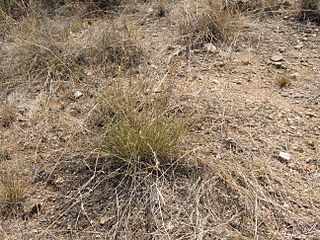 W
WEragrostis lehmanniana is a species of grass known by the common name Lehmann lovegrass. It is native to southern Africa. It is present elsewhere as an introduced species. It is well known as an invasive weed in some areas, such as Arizona in the United States.
 W
WEragrostis pilosa is a species of grass. It is native to Eurasia and Africa. It may or may not be native to North America. It is widely introduced, and it is a common weed in many areas.
 W
WEragrostis superba is a species of perennial tufted grass in the family Poaceae. It is a palatable forage species but occurs at low densities.
 W
WFestuca mairei, the Atlas fescue, is a densely-clumped species of grass.
 W
WHarpachne schimperi is a species of grass in the true grass family (Poaceae), found from Ethiopia and Sudan south to Zambia. It grows in dense tufts up to 40 cm high, with oblong panicles 4–7.5 cm long and dense spikelets.
 W
WHelictotrichon, or alpine oatgrass, is a genus of perennial flowering plants in the grass family. Genus name comes from the Greek heliktos meaning twisted and trichos meaning spine, referring to the shape of the awn.
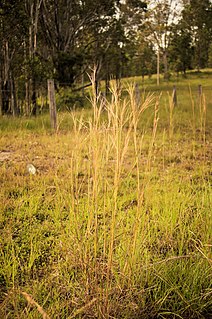 W
WHyparrhenia filipendula is a species of perennial bunchgrass commonly known as Tambookie grass, fine thatching grass, and fine hood grass. It grows to a height of 1 to 1.5 metres.
 W
WMegathyrsus maximus, known as Guinea grass and green panic grass in English, is a large perennial bunch grass that is native to Africa, Israel and Yemen. It has been introduced in the tropics around the world. Until 2003, it was named Urochloa maxima. It was moved to genus Megathyrsus, which it shares with one other species, M. infestus.
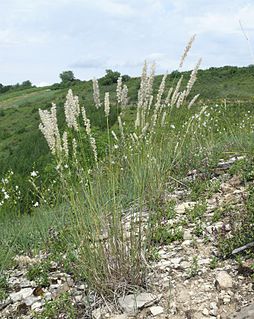 W
WMelica ciliata, the hairy melic or silky spike melic, is a species of perennial bunchgrass native to Europe, north Africa, and temperate Asia. It has been introduced to South Australia.
 W
WMibora, or sandgrass, is a genus of European and North African plants in the grass family.
 W
WMolinia, or moor grass, is a genus of two species of flowering plants in the grass family, native to damp moorland in Eurasia and northern Africa. They are both herbaceous perennial grasses.
 W
WMolinia caerulea, known by the common name purple moor-grass, is a species of grass that is native to Europe, west Asia, and north Africa. It grows in locations from the lowlands up to 2,300 m (7,546 ft) in the Alps. Like most grasses, it grows best in acid soils, ideally pH values of between 3.5 and 5, however, it can continue to live under more extreme conditions, sometimes to as low as 2. It is common on moist heathland, bogs and moorland throughout Britain and Ireland. Introduced populations exist in northeastern and northwestern North America.
 W
WParapholis incurva is a species of grass native to Europe, Asia and northern Africa, and widely naturalised elsewhere. Common names include coast barbgrass, curved sea hard grass, curved hard-grass, sicklegrass, curved sicklegrass and curved parapholis.
 W
WPhalaris arundinacea, or reed canary grass, is a tall, perennial bunchgrass that commonly forms extensive single-species stands along the margins of lakes and streams and in wet open areas, with a wide distribution in Europe, Asia, northern Africa and North America. Other common names for the plant include gardener's-garters in English, alpiste roseau in French, rohrglanzgras in German, kusa-yoshi in Japanese, caniço-malhado in Portuguese, and hierba cinta and pasto cinto in Spanish.
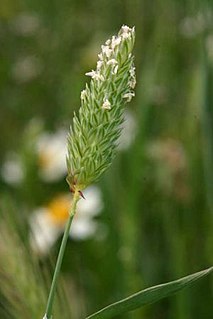 W
WPhalaris minor is a species of grass native to North Africa, Europe, and South Asia. The bunchgrass is widely naturalised elsewhere.
 W
WSporobolus spicatus, also known as salt grass, is a halophyte.
 W
WSporobolus virginicus, known by numerous common names including seashore dropseed, marine couch, sand couch, salt couch grass, saltwater couch, coastal rat-tail grass, and nioaka, is a species of grass with a wide distribution.
 W
WStipa barbata is a species of perennial grass native to southern Europe, North Africa, and the Levant in the Mediterranean Basin, and temperate Asia.
 W
WTrisetum flavescens, the yellow oatgrass or golden oat grass, is a species of grass in the family Poaceae. It is native to Europe, Asia, and North Africa.
 W
WMount Kilimanjaro is a dormant volcano in Tanzania. It has three volcanic cones: Kibo, Mawenzi and Shira. It is the highest mountain in Africa and the highest single free-standing mountain in the world: 5,895 metres (19,341 ft) above sea level and about 4,900 metres (16,100 ft) above its plateau base.